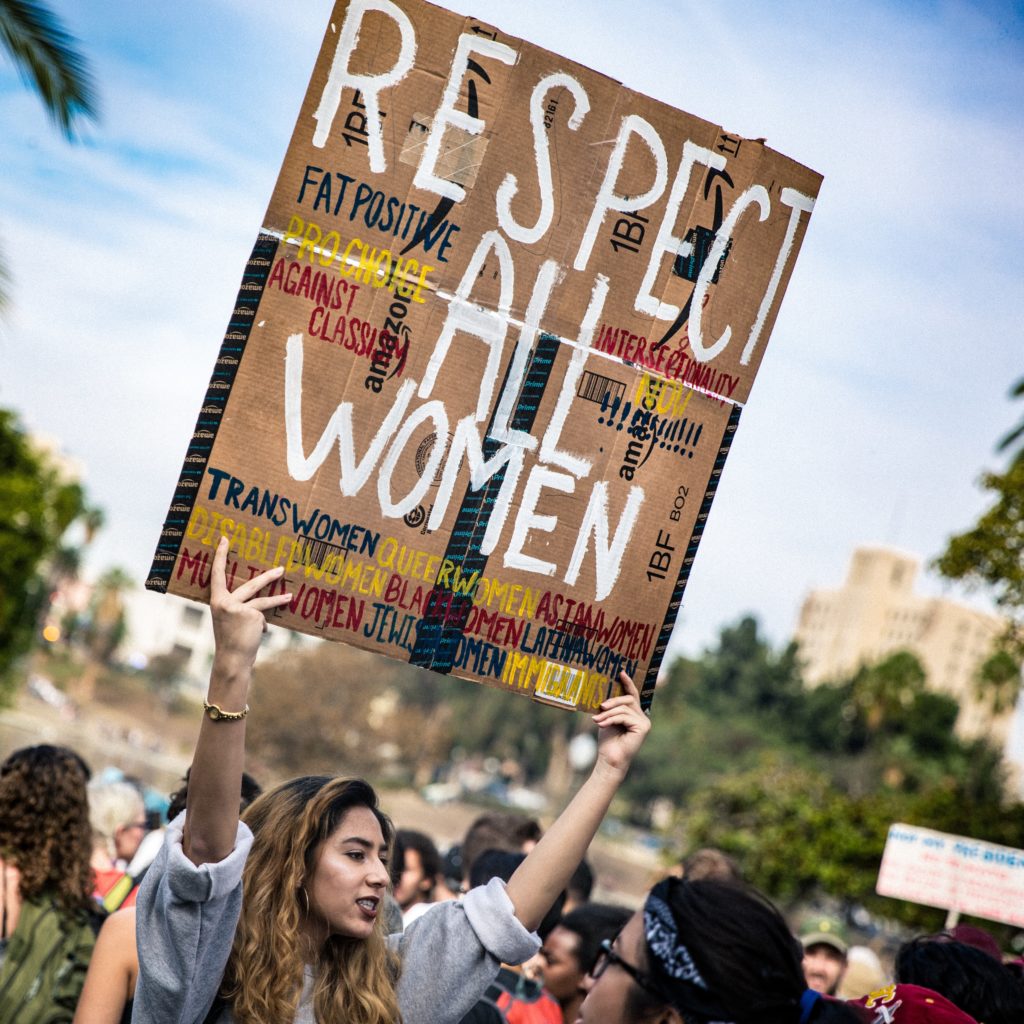Scope and Depth of the Problem and Social and Legal protections
According to the U.S. Department of Justice: “The term ‘domestic violence’ includes felony or misdemeanor crimes of violence committed by a current or former spouse or intimate partner of the victim, by a person with whom the victim shares a child in common, by a person who is cohabitating with or has cohabitated with the victim as a spouse or intimate partner, by a person similarly situated to a spouse of the victim under the domestic or family violence laws of the jurisdiction receiving grant monies, or by any other person against an adult or youth victim who is protected from that person’s acts under the domestic or family violence laws of the jurisdiction.” (USDOE. 2018).
According to the CDC (Center for Disease Control), “Intimate partner violence (IPV) is a serious, avoidable public health problem that affects millions of Americans. The term “intimate partner violence” or Domestic Violence depending on the state you live in describes physical, sexual, or psychological harm by a current or former partner or spouse. This type of violence can occur among heterosexual or same-sex couples and does not require sexual intimacy (CDC, 2018).
When does sexual assault and intimate partner violence interconnect?
D.V. offenders who are physically abusive toward their intimate partners may often become sexually abusive as well. Victims who are both physically and sexually abused are more likely to be injured or killed than those who experience only one form of abuse. People of all genders, races, ages, social classes, and ethnicities are as likely to be assaulted by an intimate partner. Women who are disabled, pregnant or attempting to leave their abusers are at greatest risk for intimate partner rape (NCADV, 2018).
National statistics published by the Center for Disease Control, The National Coalition Against Domestic Violence, as well as FBI crime statistics report the following:

- 1 in 5 women will be raped in her lifetime.
- Nearly 1 in 2 women and 1 in 5 men reported being victimized by a sexually violent predator (other than rape) at some point in their lives.
- Intimate partners used sexual assault and rape to intimidate, control and debase victims/survivors of domestic violence.
- Intimate partners who commit sexual assault are more likely to cause physical injury than a stranger or friend.
- Between 14% and 25% of women are sexually assaulted by intimate partners during the course of their relationship.
- Between 40 and 45 percent of women in abusive relationships will also be sexually assaulted during the course of the relationship.
- More than half of women who were raped by an intimate partner were likely to be sexually assaulted multiple times by the same partner.
- Women who are sexually abused by intimate partners report more risk factors for intimate partner homicides than non-sexually abused women.
- Women who are sexually abused by intimate partners suffer severe and long-lasting physical and mental health problems, similar to those of other rape victims.
Note: These women experience higher rates of depression and anxiety than women who were either raped by a non-intimate partner or physically but not sexually abused by an intimate partner; they report severe trust and intimacy issues.
Rape in marriage
According to the U.S. DOJ, FBI crime statistics, and the National Coalition Against Domestic Violence:
- 18 percent of female victims who were raped by their spouse, say their children witnessed the crime.
- Between 10 and 14 percent of married women will be raped at some point during their marriages.
- Marital rape is the most underreported form of sexual assault. Only 36 percent of all rape victims ever report the crime to the police. The percentage of married women who report spousal rape to the police is even lower.
- Before 1976, state laws specifically exempted spousal rape from their general rape laws. However, in 1976, Nebraska became the first state to pass a law recognizing nonconsensual intercourse with a spouse is rape.
- By 1993, all 50 states had either completely or partially repealed their spousal rape exemptions.
- However, there are a few states that continue to have some form of spousal rape exemptions. Some states legally consider it a lesser crime than non-spousal rape. Unfortunately, many Americans do not believe marital rape is actually rape. The law says otherwise.
Make a difference in your community

The National Coalition Against Domestic Violence suggests 6 Ways to Take A Stand Against Domestic Violence and Sexual Abuse. Do you want to do something about the intersection between domestic violence and sexual abuse? Here are six ideas to get you started:
- Encourage primary care physicians and OB/GYNs in your community to screen women for signs of physical and sexual violence and ask if they are in violent or abusive relationships during regular checkups. Some states require that physicians become mandated reporters if they reasonably suspect domestic violence. Other states require all persons to be mandated reporters of suspected D.V.
- Demand state legislators update rape laws to include marital rape rather than considering marital rape a different crime.
- Work with local schools, religious youth groups, and other youth-oriented programs to teach about healthy sexuality and healthy relationships.
- Ask local schools and universities to address the issue of sexual violence in their classrooms and through victim assistance programs.
- Ask your Members of Congress to support funding for direct surveys and programs created within the Violence Against Women Act (VAWA).
- Volunteer at your local rape crisis center or state sexual assault coalition.
It is highly probable that as a counselor you will encounter clients who are either a D.V. victim or a convicted perpetrator of family violence. It is highly advisable that you be at least minimally aware of some of the legal instruments that the various states provide to protect victims of domestic violence, sexual abuse, stalking, terrorist threats, and so on.
Domestic Violence: Orders of Protection and Restraining Orders
Survivors of domestic violence have several civil and criminal protections or restraining order options to protect themselves from further abuse. Although these orders won’t necessarily stop an abuser from stalking or hurting a victim, they permit the victim to call the police and have the abuser arrested if the order is violated. This article explains the various types of protections available to a D.V. Victim.
More specifically, the following domestic violence orders of protection will be discussed:
- Emergency Protection Orders
- Protection Orders
- Restraining Orders

Emergency Protection Order
In many states, when the police encounter a domestic violence situation, one of the two parties involved in the dispute is required (or requested) to leave the home. Often this person is the abuser, although the police can be mistaken about who the aggressor is. In about one-third of states, police officers are also authorized and required to remove guns when they arrive at the scene of a D.V. incident.
In some states, the police can give the victim an Emergency Protection Order (EPO), which is a short-term protection order typically given to a victim by the police or magistrate when his or her abuser is arrested for D.V. An EPO is generally for a limited period such as three or seven days, which gives the victim time to request a longer-term protection order.
Protection Order
A protection order may include many different provisions, including:
- No Contact Provision: Prohibiting the abuser from calling, texting, emailing, stalking, attacking, hitting, or disturbing the victim.
- Peaceful Contact Provision: Permitting the abuser to peacefully communicate with the victim for limited reasons, including care and transfer for visitation of their child.
- Stay Away Provision: Ordering the abuser to stay at least a certain number of yards or feet away from the victim, his or her home, job, school, and car. The stay-away distance can vary by state, judge or the lethality of the situation, but is often at least 100 yards or 300 feet.
- Move Out Provision: Requiring the abuser to move out of a home shared with the victim.
- Firearms Provision: Requiring the abuser to surrender any guns he or she possesses (about 2/3rds of states) and/or prohibiting the abuser from purchasing a firearm.
- Counseling Provision: Ordering the abuser to attend counseling, such as batterer’s intervention or anger management.
Protection orders may include children, other family members, roommates, or current romantic partners of the victim. This means the same no contact and stay away rules apply to the other listed individuals, even if the direct harm was to the victim. Some states even allow pets to be protected by the same order, as abusers may harm pets to torment their victims.
Some states include, as part of the protection order, visitation and custody for children of the victim and abuser. These are generally temporary and can be modified by divorce or other future family court orders.
In order to obtain a protection order, you need to file the required legal papers with your local court and follow your state law to present evidence at your hearing and to serve your abuser. The police can sometimes serve the papers for you.

Restraining Order
A restraining order is an order requiring parties to a lawsuit to do or not do certain things. It may be part of a family law case, such as a divorce, or another civil case. Although this isn’t the same as a “domestic violence restraining order,” which is summarized above, domestic violence can be a factor in the underlying family law case.
Restraining orders may be requested “ex parte” meaning that one party asks the court to do something without telling the other party. If the restraining order is granted ex parte, then the other party is later permitted a hearing to present his or her side of the story. This is often the process for protection orders as well. Since restraining orders also vary by state, it’s important to consult with an attorney familiar with the law where you live.
If a criminal case is pending, the district attorney may request or the judge may order a protection order for the victim of the crime.
Violation of Protection Orders
Violation of a protection order can be treated in one of three ways: as a felony, misdemeanor, or contempt of court. Felony charges are typically reserved for either repeat or serious violations. Sometimes violations are considered both contempt of court and a new domestic violence charge, although California found that this subjects the defendant to double jeopardy. In many states, police policy is to arrest violators of these orders automatically.
Enforcing Protection Orders in Different States
Domestic violence survivors may move as part of a plan to keep them safe from a former abuser. The Full Faith and Credit Clause of the Constitution and federal laws require valid protection orders to be enforced where they’re issued and in all other U.S. states and territories as well. Therefore, if an abuser stalks a victim in his or her new state of residency, the police must uphold the protection order from another state.
References
California Penal Code (CPC). (2017) 273.5, .290.005, 262. Retrieved March 24,2019 from https://leginfo.legislature.ca.gov/faces/codesTOCSelected.xhtml?tocCode=PEN
Centers for Disease Control (CDC) (October 23, 2018) Intimate partner Violence U.S. Department of Health & Human Services
https://www.cdc.gov/violenceprevention/intimatepartnerviolence/index.html
Findlaw. (2019). Domestic Violence Laws Retrieved March 23, 2019 From https://family.findlaw.com/domestic-violence/state-domestic-violence-legislation.html
NCADV. The National Coalition Against Domestic Violence. (NCADV) (April 4, 2018). Quick Guide: Domestic Violence and Sexual Abuse. Retrieved March 23, 2019 from https://ncadv.org/blog/posts/quick-guide-domestic-violence-and-sexual-abuse
U.S. Department of Justice. (March 6, 2019) Office on violence against women, Domestic violence
https://www.justice.gov/ovw/domestic-violence

